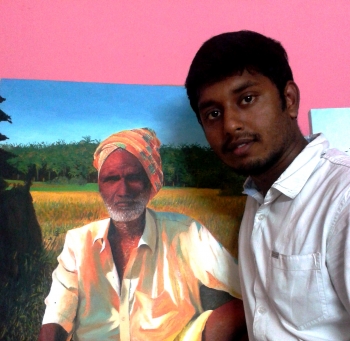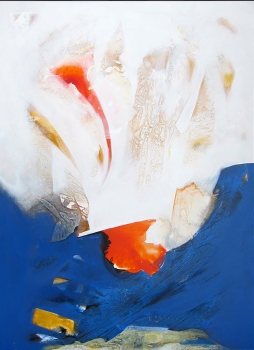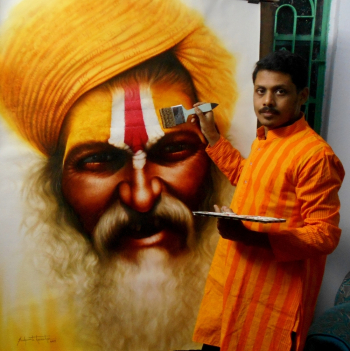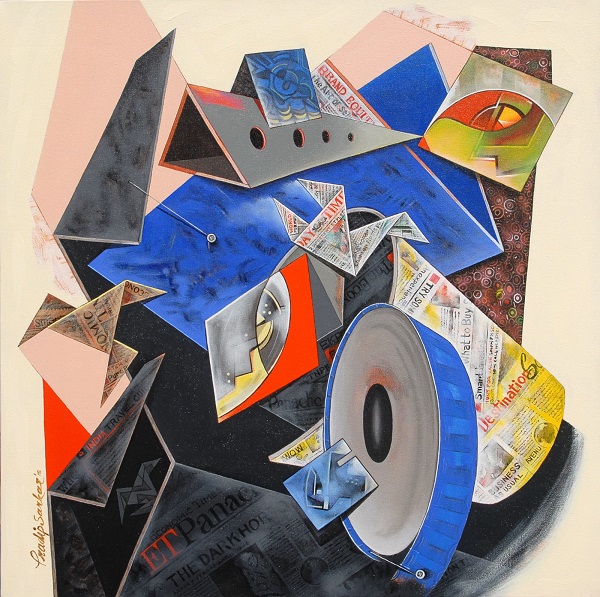
Abstract art, a mesmerizing and innovative genre, defies the conventional boundaries of artistic expression, offering a unique lens through which emotions, ideas, and concepts come to life on canvas. Rooted in the early 20th century, visionaries like Wassily Kandinsky and Kazimir Malevich paved the way for this avant-garde movement, challenging the status quo and introducing a new paradigm in the art world.
Characterized by non-representational forms, expressive use of color, gestural brushstrokes, and a focus on composition, abstract art invites viewers into a realm where interpretation reigns supreme. Its origins lie in the pursuit of capturing the intangible, transcending the constraints of realistic representation.
In tandem with the evolution of abstract art, online art galleries have emerged as powerful platforms, revolutionizing the art consumption experience. They dismantle geographical barriers, providing a global stage for artists and enabling enthusiasts to explore curated collections at their convenience. This digital shift not only democratizes art but also fosters an interactive and immersive connection between the observer and the abstract masterpiece. As we navigate the captivating world of abstract art, online galleries stand as indispensable gateways, reshaping how we encounter, understand, and embrace the boundless creativity of abstract expression.
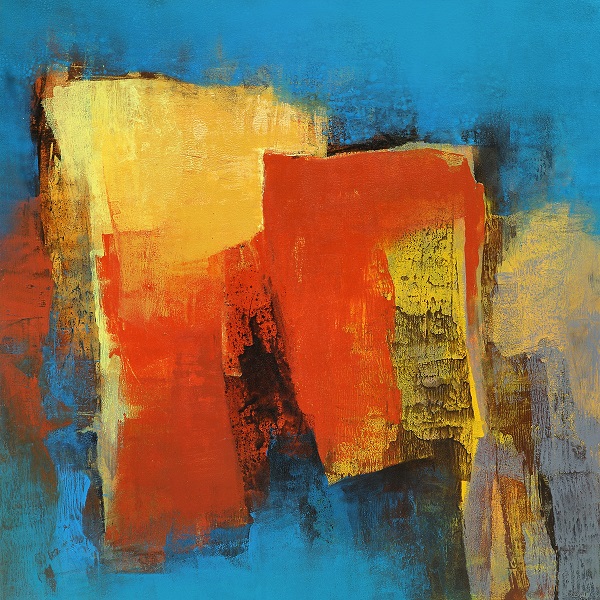
The Essence of Abstract Art:
Abstract art stands as a captivating genre that pushes the boundaries of artistic expression, offering a departure from the traditional portrayal of reality. Rooted in the early 20th century, its emergence marked a paradigm shift led by pioneers such as Wassily Kandinsky and Kazimir Malevich. These visionaries sought to liberate art from the constraints of literal representation, opening up a space for the exploration of emotions, ideas, and concepts through a deeply personal and subjective lens.
In contrast to realistic art, abstract pieces deliberately defy recognizable forms, inviting viewers into a realm of non-representational abstraction. The canvas becomes a playground for the artist's imagination, a space where colors, shapes, and textures coalesce to communicate the ineffable. Freed from the need to mimic the external world, abstract art paintings becomes a visceral and emotional experience, challenging the viewer to delve into the nuances of the artist's interpretation.
The roots of abstract art delve into a desire to capture the intangible, to express the inexpressible. Kandinsky, inspired by the synesthetic relationship between color and music, believed in the power of abstract forms to evoke profound emotional responses. Malevich, with his iconic "Black Square," aimed to transcend the limitations of representation and embrace the purity of non-objectivity.
As we explore the origins of abstract art, we uncover a rich history of innovation and rebellion against artistic conventions. This movement continues to shape the contemporary art scene, inspiring artists to break free from the literal and embrace the limitless possibilities of abstraction.
Key Characteristics of Abstract Art:
1. Non-Representational Forms:
Abstract art distinguishes itself through its deliberate avoidance of recognizable objects. Instead of adhering to the confines of depicting reality, abstract artists venture into the realms of the abstract and subjective. By forgoing explicit representation, these artworks invite viewers to embark on a personal journey of interpretation. The absence of recognizable forms encourages a more profound engagement, allowing individuals to connect with the art on an emotional and intellectual level. This characteristic of abstract art transforms the viewing experience into a dynamic dialogue between the observer and the artwork, where each interpretation becomes a unique narrative.
2. Expressive Use of Color:
In the vibrant tapestry of abstract paintings, color takes on a role beyond mere visual aesthetics. Abstract artists purposefully select colors for their emotional resonance rather than their fidelity to reality. Each hue becomes a tool for conveying specific feelings, moods, or even evoking memories. The expressive use of color transcends the boundaries of representation, creating a visceral and emotive experience for the viewer. Whether through bold, contrasting palettes or subtle, harmonious tones, abstract art harnesses the power of color as a conduit for conveying the artist's innermost sentiments.
3. Gestural Brushstrokes:
A hallmark of abstract art lies in the bold and expressive brushstrokes that dance across the canvas. Artists use their strokes to infuse a sense of movement, energy, and spontaneity into their creations. Each stroke becomes a visible manifestation of the artist's physical and emotional presence, capturing moments of inspiration and intensity. The gestural brushstrokes not only contribute to the overall aesthetic but also provide insight into the artist's creative process, inviting viewers to witness the dynamic interplay between the artist's hand and the canvas.
4. Focus on Composition:
Abstract art places a profound emphasis on the meticulous arrangement of shapes, lines, and colors to construct a visually compelling composition. Every element within the artwork is carefully considered, contributing to the overall balance and harmony of the piece. The intentional arrangement of these elements guides the viewer's gaze and prompts a contemplation of the relationships between various components. Abstract compositions, often devoid of a predetermined narrative, encourage viewers to explore the interplay of forms and appreciate the visual cohesion created by the artist. Through a conscious focus on composition, abstract art transforms into a visually stimulating and intellectually engaging experience, where the arrangement of elements becomes a language of its own.
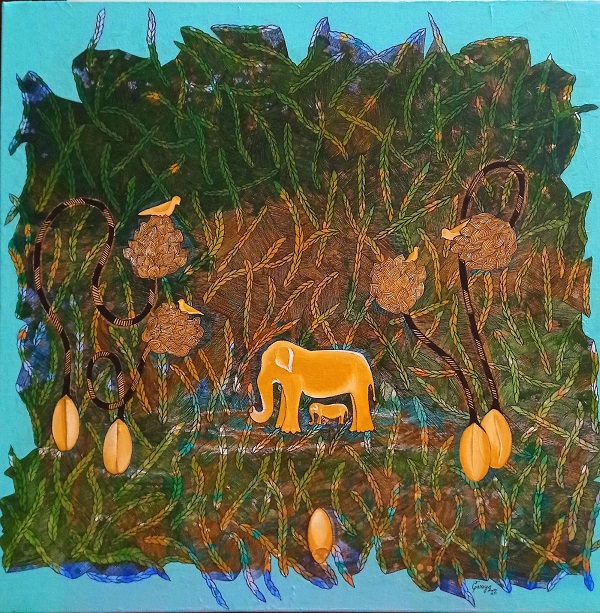
The Rise of Online Art Galleries:
The digital age has ushered in a revolutionary transformation in the art world, marked prominently by the rise of online art galleries. These virtual platforms have become pivotal in reshaping the dynamics of art consumption, breaking down geographical barriers and democratizing access to artistic expressions on a global scale. Whether one is an ardent art enthusiast, a seasoned collector, or a casual viewer, the emergence of online art galleries presents a myriad of benefits that transcend the limitations of traditional brick-and-mortar spaces.
One of the most notable advantages lies in the democratization of art. Online galleries provide artists with a borderless canvas to showcase their work to a diverse and expansive global audience. This accessibility empowers emerging artists to gain recognition beyond local confines, fostering a more inclusive and diverse art ecosystem. Simultaneously, art enthusiasts from around the world can explore a vast array of artworks, gaining exposure to diverse styles, cultures, and perspectives with just a few clicks.
Moreover, online art galleries offer unparalleled convenience. The 24/7 accessibility of these platforms liberates art from the confines of physical galleries' opening hours, allowing viewers to engage with artwork at their own pace and convenience. This flexibility benefits not only seasoned collectors but also individuals who may not have the time to visit traditional galleries due to busy schedules.
Furthermore, the digital format enhances the interactive experience for users. Virtual exhibitions, 3D gallery tours, and curated collections create an immersive environment that transcends the limitations of physical spaces. Online platforms often provide detailed information about each artwork, artist profiles, and even the option for virtual discussions, enriching the viewer's understanding and connection with the art.
In essence, online art galleries stand as transformative gateways, redefining how individuals engage with and appreciate art in the contemporary digital landscape.
Advantages of Online Art Galleries:
Global Reach:
Online art galleries serve as a virtual stage, eradicating geographical constraints and granting artists the ability to showcase their creations to a global audience. This democratization of art exposure is not only advantageous for artists seeking international recognition but also enriches the global art landscape by introducing diverse perspectives. Conversely, art lovers, regardless of their physical location, gain the opportunity to explore a rich tapestry of artistic expressions from the comfort of their homes. This expansive reach facilitates cultural exchange and fosters a deeper understanding of artistic nuances across borders, contributing to the globalization of art appreciation.
Curated Collections:
One of the distinctive features of online art galleries is the curation of collections that cater to specific themes, styles, or artists. Curated collections serve as curated pathways for art enthusiasts, guiding them through a thoughtfully selected array of artworks that align with their individual tastes and preferences. This curation not only facilitates the discovery of new artists and movements but also enhances the viewer's engagement by presenting a cohesive narrative within the collection. It transforms the digital space into a curated art experience, akin to strolling through the halls of a specialized gallery, fostering a more deliberate and meaningful exploration of the diverse artistic landscape.
Interactive Viewing Experience:
Virtual exhibitions and 3D gallery tours redefine the traditional gallery experience, offering art enthusiasts an interactive and immersive encounter with artworks. These digital tools enable viewers to navigate virtual spaces, zoom in on details, and even experience artworks in a simulated three-dimensional environment. Such innovations bridge the gap between the physical and digital realms, providing a dynamic and engaging platform for viewers to connect with the art on a more personal level. Interactive viewing experiences not only make art more accessible but also allow for a deeper exploration of the artist's intent and the nuances of each piece, enhancing the overall appreciation of the artistic journey.
Convenience and Accessibility:
Online art galleries epitomize convenience by emancipating art from the constraints of time and space. Enthusiasts can browse, purchase, and enjoy art at any time, breaking free from the traditional gallery hours. This accessibility is particularly valuable for individuals with hectic schedules or those residing in areas with limited access to physical galleries. The online platform facilitates spontaneous and uninterrupted engagement with art, ensuring that appreciation is not bound by the limitations of a specific location or time frame. The convenience offered by online galleries empowers a broader audience to seamlessly integrate art into their daily lives, fostering a more accessible and inclusive art culture.
Navigating Abstract Art in Online Galleries:
When exploring abstract art in online galleries, there are a few key considerations:
1. Artist Profiles: Learn about the artist's background, inspiration, and artistic journey to gain a deeper understanding of the artwork.
2. High-Quality Images: Ensure that the online gallery provides high-resolution images of the artwork, allowing you to appreciate the details and nuances of each piece.
3. Artwork Descriptions: Look for detailed descriptions that provide insights into the artist's intent, techniques used, and the emotions conveyed in the artwork.
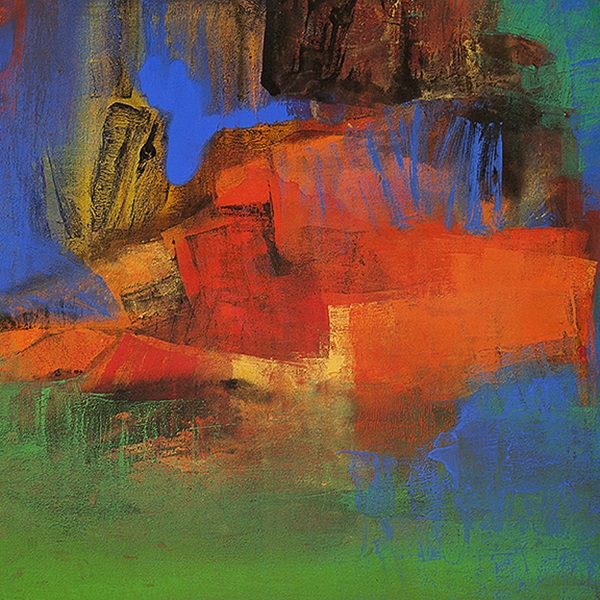
Read More: How Do Indian Artists Blend Tradition with Modernity in Abstract Paintings?
Conclusion:
As we embrace the ever-evolving landscape of art, abstract paintings continue to captivate and challenge our perceptions. Online art galleries serve as a gateway to this mesmerizing world, offering art enthusiasts a convenient and immersive way to explore, appreciate, and even acquire these unique expressions of creativity. Whether you are an avid collector or a casual observer, the combination of abstract art and online galleries opens up a world of artistic possibilities at your fingertips.











